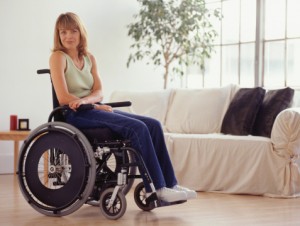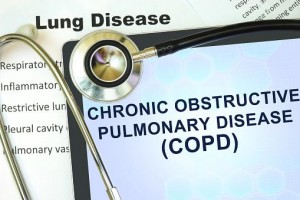Cerebral palsy (CP) in adults increases risk of asthma, hypertension and arthritis
 Cerebral palsy in adults increases the risk of asthma, hypertension and arthritis. Cerebral palsy (CP) is a muscle tone, movement, or posture disorder caused by an insult of the immature, developing brain prior to birth.
Cerebral palsy in adults increases the risk of asthma, hypertension and arthritis. Cerebral palsy (CP) is a muscle tone, movement, or posture disorder caused by an insult of the immature, developing brain prior to birth.
Cerebral palsy is known as a non-progressive disorder, meaning it does not get worse over time. Unfortunately, other conditions that co-exist with cerebral palsy, such as muscle tightness, can worsen over the years.
Individuals with cerebral palsy may have difficulty swallowing and have eye muscle imbalances. Their range of motion may be limited largely due to muscle stiffness. The range of function for a person with cerebral palsy greatly varies. Some individuals have the ability to walk, while others do not. Some have normal intellectual function, while others may have disabilities.
Adults with cerebral palsy (CP) have higher odds for chronic health conditions
New research has found that adults with cerebral palsy are at a greater risk of developing asthma, hypertension and arthritis. Research has shown that those with CP have higher rates of death due to ischemic heart disease and cancer. Tracking disease risk has not been done for those with CP until now with the Medical Expenditure Panel Survey (MEPS), which helps estimate the rate of chronic disease in adults with CP.
Eight chronic conditions were evaluated in those with and without CP, including diabetes, asthma, hypertension, other heart conditions (such as cardiovascular disease, heart attack, angina, and other cardiovascular conditions), stroke, emphysema, joint pain and arthritis.
Rates of these chronic illnesses were seen to be higher in adults with CP compared to adults without. The results were as follows: diabetes (9 percent vs 6 percent, respectively), asthma (21 percent vs 9 percent), hypertension (30 percent vs 22 percent), other heart conditions (15 percent vs 9 percent), stroke (5 percent vs 2 percent), emphysema (4 percent vs 1 percent), joint pain (44 percent vs 28 percent), and arthritis (31 percent vs 17 percent).
The authors wrote, “Accelerated functional losses are a concern in the aging CP population. A large percentage of individuals who were once mobile eventually stop ambulating due to fatigue, inefficiency of gait, and/or muscle and joint pain. The current findings demonstrated that level of mobility impairment was strongly associated with chronic conditions. Future efforts are needed to better understand the health care use associated with chronic conditions for persons with CP and to characterize the relationships among mobility impairments, sedentary lifestyles, and chronic conditions.”
Causes and risk factors of cerebral palsy
Cerebral palsy is an abnormality in the brain that forms prior to birth. Although the exact trigger of the abnormality is often unknown, below are some factors that can contribute to CP.
 Random mutations
Random mutations- Maternal infections
- Fetal stroke
- Lack of oxygen
- Infant infections
- Traumatic head injury
Risk factors for CP rely on the mother’s health, the infant’s health and the birthing process.
Maternal health risk factors for CP
- German measles
- Chickenpox
- Cytomegalovirus – common flu-like virus that can cause birth defects
- Toxoplasmosis – parasitic infection
- Syphilis
- Exposure to toxins
- Other conditions like thyroid problems
Infant health risk factors for CP
- Bacterial meningitis
- Viral encephalitis – inflammation of the membranes that surround the brain and spinal cord
- Severe or untreated jaundice
Other factors due to pregnancy and birth
- Premature birth
- Low birth weight
- Breech births
- Multiple babies
Functional changes in adults with CP
There are many functional changes that can occur with cerebral palsy, such as changes in motor function, communication function and eating and swallowing.
 Changes in motor functions: Symptoms of premature aging can occur as early as a person’s 20s. Musculoskeletal changes are a common complaint in those with CP. A decreased function of mobility, muscular flexibility, strength, endurance, increased spasticity, arthritis, falls and fractures, pain and fatigue are all reported in adults with CP.
Changes in motor functions: Symptoms of premature aging can occur as early as a person’s 20s. Musculoskeletal changes are a common complaint in those with CP. A decreased function of mobility, muscular flexibility, strength, endurance, increased spasticity, arthritis, falls and fractures, pain and fatigue are all reported in adults with CP.
Communication function: Communication functions, such as speech, hearing and language begin in children with CP and, because they cannot be reversed or fixed, they carry through into adulthood. These communication functions can decrease over time due to the aging process.
Eating and swallowing: The act of eating is seen as a motor function. Patients with CP may have trouble with one or more of the motor functions related to CP, therefore, receiving the proper nutrients and fluid can be difficult. Eating and swallowing impairments can get worse with aging and can worsen rapidly, so a watchful eye must be kept on those with CP to avoid complications like choking.
Common symptoms people with cerebral palsy experience as they get older
Common symptoms experienced by people with cerebral palsy can worsen with age. Common symptoms include:
- Increased levels of pain
- Increased difficulty walking
- Increased chance of falls
- Increased dental health problems
- Long-term effects of medications
- Trouble swallowing or eating
- Other health problems may go undetected because those with CP do not receive many preventative care tests, such as mammograms, pap smears or prostate exams
Living with cerebral palsy as an adult
 Living with cerebral palsy as an adult can pose many challenges. With a decrease in motor skills performing basic tasks is far more challenging for someone with CP. These individuals may have problems dressing themselves, showering or bathing, or even feeding themselves. This can take away a person’s autonomy and hinder their sense of self.
Living with cerebral palsy as an adult can pose many challenges. With a decrease in motor skills performing basic tasks is far more challenging for someone with CP. These individuals may have problems dressing themselves, showering or bathing, or even feeding themselves. This can take away a person’s autonomy and hinder their sense of self.
Furthermore, maintaining personal relationships can be difficult as well. They may not be able to attend social functions or partake in social activities due to the limitations set by their condition. Furthermore, they may never find a partner or spouse, which can take a toll on their quality of life.
Additionally, living with cerebral palsy increases the risk of other serious health conditions that may be overlooked due to lack of testing. This increases the risk of developing chronic health conditions, which can take a greater toll on their overall health and further diminish their quality of life.
Living with a disability can be stressful, so the need for proper care and the assistance of caregivers is essential for a person with CP to live a normal, healthy life.
Does alcohol play a role in Parkinson’s disease?
For years researchers have aimed to uncover a link between lifestyle choices like alcohol consumption and Parkinson’s disease. Now researchers have found conflicting evidence surrounding the connection. Continue reading…
-
Weight Training Programmes for Fitness UK
Weight Training Programmes are ideal for
-
Originelle Geschenke, individuell nach den Vorgaben des Kunden gefertigt.
Es gibt viele Anl?sse um Geschenke zu ?berreichen – sei es der
-
Fat Release Tips For the Summer
The most difficult aspect of any fat red
-
How Do Solar Panels Work - Magic ? -
With energy prices at a all time high, the interest in alternative po
-
The Diet Solution Program: A Scam?
There has been a substantial amount of hype surrounding the Weight
-
Best Weight Loss Diet – Picking The Best Diet Will Insure That Every Speck Of Fat Will Get Eliminated
If you are looking for the best weight loss diet then there is a great
- DON'T MISS
- Helping the Body Shed Weight Naturally
- The Many Faces Of Solar Power
- Top Thirty Weight Loss Tips And Tricks
- 5 Reasons You Regain Lost Weight
- Fast Weight Loss Program Without Pills
- Is Workout Needed For Fast Weight Loss?
- The Reasons Why You Shouldnt Bother About Hoodia Side Effects
- Solid Advice For A Successful Weight Loss Plan
- Fat Burning Furnace Review - Who Is Rob Poulos And What Does He Know About Fat Loss?
- Picking The Correct Diet Tablet For Fat Burning




